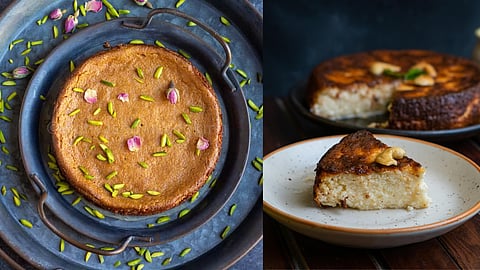
- HOMEGROWN WORLD
- #HGCREATORS
- #HGEXPLORE
- #HGVOICES
- #HGSHOP
- CAREERS
- ABOUT US
- CONTACT US

Sampling a saccharine pilgrimage through time, from the Malpua known to us since the 2nd century BC down to the new-age fusion mithais, our taste buds carry the collective memory of incalculable desserts that could have been invented only in India. The litany of festivals that encapsulates each calendar year — like the treacle dribbling down your forearms after trying a gulab jamun — can only be experienced in their fullness if you know the right sweetmeats to order from the halwai (pastry cook).
But for those of us who grew up in the cities, mainstream barfis with waraq (silver filigree) on top and the autocratic family of laddoos define the limits of our decadence. Homegrown has butterfingers from dipping into local pantries across the country to help curate your Diwali culinary adventures with 5 lip smacking confections that are so out of the box, you'd wonder who even came up with these in the first place.
I. Pootharekulu from Atreyapuram, Andhra Pradesh
Ever heard of an entire cottage industry running solely on rolled paper sweets? This is the fascinating story of pootharekulu, invented close to three centuries ago in a tiny hamlet of Andhra Pradesh. Today, this delicacy conjured out of rice wafers and cane sugar is supporting the livelihood of more than 400 women in Atreyapuram. The sheet-like wrapper that crumbles in multiple layers on your tongue is produced from grinding rice into a runny batter and then swiping it over an upturned clay pot. Glazed with a generous dollop of ghee, the filling of dry-fruits and jaggery is folded like salad rolls in the rice paper and you end up with a crispy, addictively rich creation that leaves an aftertaste of cardamom in its wake.
II. Patoleo from Goa
Traditionally prepared for the Assumption of Mary feast as an offering for a munificent harvest season, patoleo at an initial glance does not betray the taste it delivers unexpectedly upon your palate, trussed up in turmeric leaves and inimical in its foreignness. However, the familiar notes of jaggery and grated coconuts will assuage your doubts quickly as you bite into the dough coating, realising that this is a steamed rice dumpling with a dash of Catholic Goa. The formula is pretty ubiquitous though, manifesting as pitha in West Bengal and haldi panna pathali in neighbouring Karnataka.
III. Chhena Poda from Odisha
As a culture we are not ones to shy away from paneer, but what sets Chhena poda apart from other concoctions in the Indian kitchen is its golden brown crust and a cheesecake mouthfeel that keeps you guessing at the other ingredients. Using semolina as a binder, the cottage cheese is caramelised and then baked in a preheated oven before being coated with a liberal sprinkling of crushed pistachios (or other nuts). There's a characteristic smoky note that underpins the creaminess and must have been more pronounced when the chhena was slowly cooked in firewood ovens as the legend goes. Transcending the territories of Odisha, it goes by various other names like Bhapa Sandesh and Kalakand.
IV. Parwal Ki Mithai from Bihar
Who would have thought that pointed gourd, unofficially among the least favoured vegetables in our diet, could be transformed into a dessert? The alchemy of mawa (evaporated milk solids) and nuts stuffed into sugar-dipped parwal is enough to exonerate you of first impressions. Garnished with almond flakes, cardamom and pistachios, the right balance of sweet and saltiness is achieved only when the mawa has been roasted until it turns pink. Here's one indulgence that is also nutrient forward, if that allays your conscience for gorging on one too many sweets this festive season.
V. Madhurjan Thongba from Manipur
Essentially deep fried dumplings served with sweetened milk, madhurjan thongba originates from the North Eastern state of Manipur. Shapeshifting as Chhangban leh kurtai in Mizoram, the appeal of this village elders' recipe emerges from the fresh coconut, bay leaves and cinnamon sticks added for an unforgettable piquancy. A pro tip would be to fry your dough balls of besan (gram flour) in refined oil until they turn a satisfying bronze colour. You can also crush some black cardamom on top when it's ready and the whole process should not take you more than half an hour. Madhurjan thongba is among many such low maintenance specials that exist as interesting alternatives to the same old kaju katris and rasgullas of yore.
